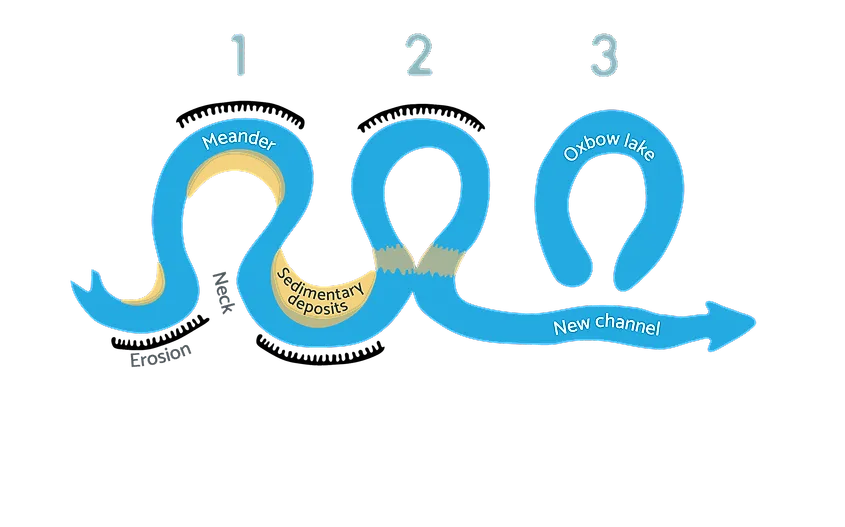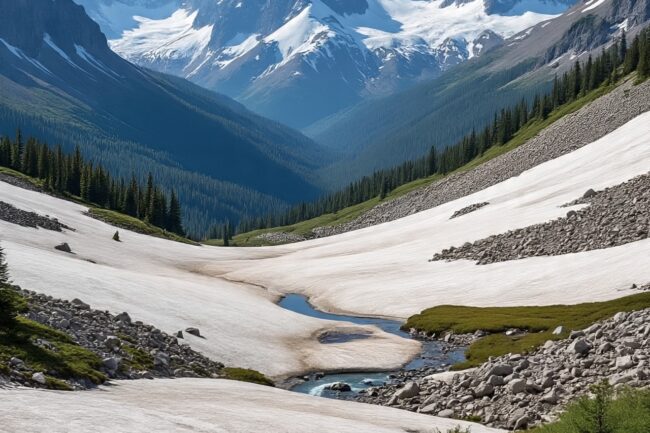Our Changing Earth Class 7 MCQ Online Test
Class 7 Our Changing Earth Notes
Class – 7
Our Changing Earth Notes
The Earth is Changing Earth’s surface is not static – it keeps changing due to natural forces.
-
These forces can be:
-
Endogenic forces – from inside the Earth
-
Exogenic forces – from outside the Earth
-
Major Natural Forces
A. Endogenic Forces
-
Originate inside the Earth.
-
Often sudden and powerful.
-
Examples:
-
Earthquakes
-
Volcanic eruptions
-
Formation of mountains
-
Types of Endogenic Forces
1. Tectonic Forces: These forces cause the movement of tectonic plates, resulting in earthquakes, volcanic activity, and mountain formation.
2. Volcanic Forces: Volcanic eruptions occur when magma from the Earth’s interior is released through the surface, creating new landforms.
3. Diastrophic Forces: These forces cause the deformation of the Earth’s crust, resulting in folding, faulting, and the creation of mountains.
Effects of Endogenic Forces
1. Mountain Building: Endogenic forces can lead to the formation of mountains through the process of plate tectonics and volcanic activity.
2. Earthquakes: The movement of tectonic plates can cause earthquakes, which can have devastating effects on the environment and human populations.
3. Volcanic Landforms: Volcanic eruptions can create new landforms, such as volcanic cones, lava flows, and volcanic fields.
Importance of Endogenic Forces
1. Shaping the Earth’s Surface: Endogenic forces play a crucial role in shaping the Earth’s surface and creating various geological features.
2. Understanding Earth’s History: Studying endogenic forces helps us understand the Earth’s history, including the formation of mountains, oceans, and continents.
3. Natural Hazard Mitigation: Understanding endogenic forces can help us mitigate the effects of natural hazards, such as earthquakes and volcanic eruptions.
B. Exogenic Forces
-
Originate on the surface of the Earth.
-
Mainly due to natural agents like wind, water, glaciers, sea waves.
-
Cause erosion, weathering, and deposition.
Types of Exogenic Forces
1. Weathering: The breakdown of rocks into smaller fragments due to exposure to wind, water, ice, and temperature fluctuations.
2. Erosion: The removal and transportation of weathered rock particles by agents like water, wind, and glaciers.
3. Deposition: The accumulation of eroded sediments in a new location, such as at the bottom of a river or ocean.
Agents of Exogenic Forces
1. Water: Rivers, oceans, and glaciers play a significant role in shaping the Earth’s surface through erosion and deposition.
2. Wind: Wind can cause erosion and deposition, particularly in arid and semi-arid regions.
3. Ice: Glaciers can carve out valleys and create unique landforms through the process of glaciation.
Effects of Exogenic Forces
1. Landform Changes: Exogenic forces can lead to the formation of new landforms, such as deltas, canyons, and sand dunes.
2. Soil Formation: The breakdown of rocks through weathering can lead to the formation of soil.
3. Sedimentary Rock Formation: The accumulation of sediments through deposition can lead to the formation of sedimentary rocks.
Importance of Exogenic Forces
1. Shaping the Earth’s Surface: Exogenic forces play a crucial role in shaping the Earth’s surface and creating various geological features.
2. Understanding Earth’s History: Studying exogenic forces helps us understand the Earth’s history, including the formation of landscapes and geological features.
3. Environmental Management: Understanding exogenic forces can help us manage environmental issues, such as soil erosion and sedimentation.
-
Earthquakes
-
Sudden shaking of Earth’s surface.
-
Occurs due to movement of tectonic plates.
Key Terms:
-
Focus: The place inside the Earth where the earthquake starts.
-
Epicentre: The point on Earth’s surface directly above the focus.
-
Seismograph: Instrument that measures earthquakes.
-
Richter Scale: Measures the magnitude of earthquakes (1–10 scale).
Effects:
-
Ground cracks
-
Buildings collapse
-
Tsunamis (if underwater)
Fun Fact:
The highest magnitude ever recorded was 9.5 in Chile in 1960.
-
Volcanoes
-
Opening in Earth’s crust through which magma, gases, and ash escape.
-
When magma comes out, it’s called lava.
Types of materials:
-
Lava (molten rock)
-
Ash
-
Gases

Fun Fact:
Mauna Loa in Hawaii is the largest active volcano in the world.
-
Types of Forces Based on Results
Force Type |
Result |
Examples |
Constructive |
Creates landforms |
Volcanic mountains, deposits |
Destructive |
Destroys or erodes landforms |
Earthquakes, erosion |
-
Major Landforms Created
A. Work of Rivers:
-
Erosion in upper course → forms V-shaped valleys, waterfalls, gorges.
-
Meanders: Loops formed in middle course.
-
Ox-bow lake: A cutoff loop.

-
Deposition in lower course → forms floodplains and deltas.
B. Work of Wind:
-
Common in deserts.
-
Erosion forms mushroom rocks.

-
Deposition forms sand dunes and loess (fine dust).

C. Work of Glaciers:
-
Erode land as they move → U-shaped valleys.
-
Deposition → moraines (rocks & debris).

D. Work of Sea Waves:
-
Erosion → forms cliffs, sea caves, arches, stacks.

-
Deposition → beaches.
-
Important Terms & Definitions
Term |
Meaning |
Magma |
Molten rock inside Earth |
Lava |
Magma that comes out on surface |
Focus |
Origin point of earthquake inside Earth |
Epicentre |
Surface point above the focus |
Seismograph |
Instrument to measure earthquake vibrations |
Richter Scale |
Measures earthquake magnitude |
Meander |
Loop-like bend in river |
Ox-bow lake |
Cut-off meander loop of a river |
Delta |
Fan-shaped fertile area at river mouth |
Mushroom rock |
Rock shaped by wind erosion (wide top, narrow base) |
Sand dune |
Hill of sand created by wind deposition |
Loess |
Fine dust blown by wind and deposited elsewhere |
Moraine |
Debris (rocks) left behind by glaciers |
-
Class 7 SST notes
-
Our Changing Earth Class 7
-
Our Changing Earth notes
-
Class 7 Geography chapter summary
- Class 7 Our Changing Earth notes
